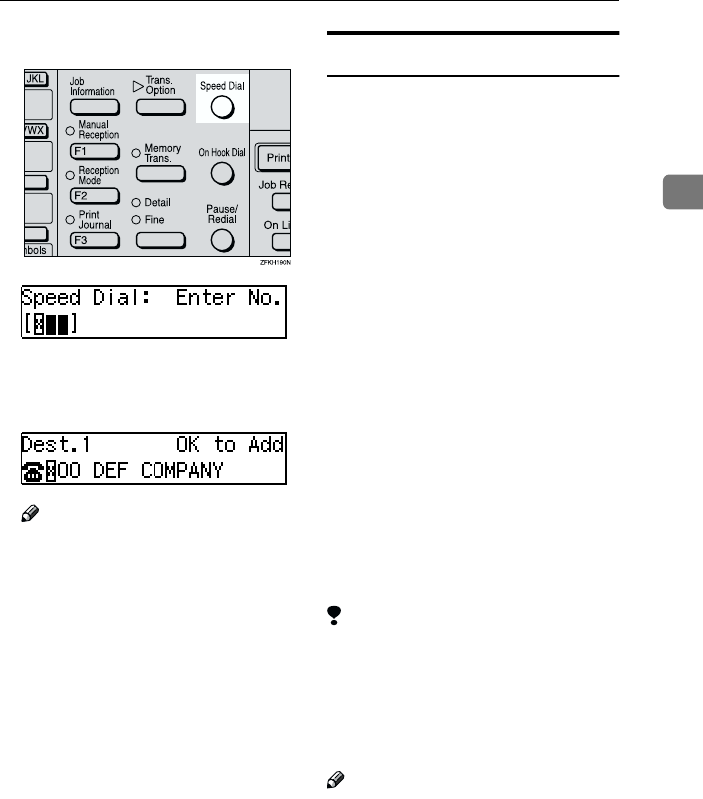
Dialing
29
2
C
CC
C
Press the {
{{
{Speed Dial}
}}
} key.
D
DD
D
Enter the two digit code (00 to 49)
for the destination with the num-
ber keys.
Note
❒ When a name is stored for the
destination, the name is dis-
played, and when no name is
stored, the fax number is dis-
played.
❒ If you wish to dial another des-
tination, press the {
{{
{OK}
}}
} key and
dial another fax number.
❒ If you make a mistake, press the
{
{{
{Clear/Stop}
}}
} key, and try again.
E
EE
E
Press the {
{{
{Start}
}}
} key.
Using Groups
You can store multiple destinations as
a single Group and simply specify a
particular Group.
You must store the destinations' fax
number in a Group beforehand.
Additionally, you can store destina-
tion names and a Group name in
Groups.
The method for specifying Groups
differs according to the way they
were programmed.
• When programmed in a Quick Di-
al: Press the Quick Dial key.
• When not programmed in a Quick
Dial: First, Program the Group
function in a User Function key
({
{{
{F1}
}}
} to {
{{
{F3}
}}
}). When you want to
specify a destination, press the
User Function key in which the
Group Function is programmed,
and then press the Group number
with the number keys. (See Chap-
ter 5, "User Function Keys" in the
Advanced Features manual.)
Limitation
❒ Quick Dials programmed for
Groups cannot be used for any oth-
er function.
❒ You cannot use Immediate Trans-
mission to send Groups. You can
only use Memory Transmission.
Note
❒ To register, edit, or delete Groups,
see p.49 “Groups”
❒ To check the contents of all
Groups, print the Group Dial list.
See Chapter 5, "Printing Re-
port/Lists" in the Advanced Fea-
tures manual.


















